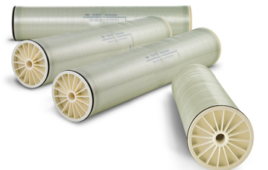 Each day, the average American uses between 80 and 100 gallons of water. The top two culprits of this usage are toilets and showers/baths, according to the U.S. Geological Survey. One things for sure, there’s a lot of wastewater being transported by the pipes underground to various treatment plants. But treatment requires a lot of energy. In a 2012 report from the National Renewable Energy Laboratory, researchers reported that water and wastewater systems account for an estimated 3 percent to 4 percent of total U.S. electricity consumption.
Each day, the average American uses between 80 and 100 gallons of water. The top two culprits of this usage are toilets and showers/baths, according to the U.S. Geological Survey. One things for sure, there’s a lot of wastewater being transported by the pipes underground to various treatment plants. But treatment requires a lot of energy. In a 2012 report from the National Renewable Energy Laboratory, researchers reported that water and wastewater systems account for an estimated 3 percent to 4 percent of total U.S. electricity consumption.
Virginia Tech researchers hope to reverse that trend by generating electricity through the wastewater treatment process. And a new study points to a potential pathway that may make it a reality.
The research relies on the usage of microbial fuel cells, an emerging technology that uses the organics from wastewater to create electrical energy.
“The type of electron donors fed into (microbial fuel cells) affects the electrical performance, and mechanistic understanding of such effects is important to optimize the (microbial fuel cell) performance,” the researchers write in their study in Scientific Reports.
Using the bacterial species Shewanella oneidensis, the researchers discovered that substrate lactate was metabolized by the host to induce cell growth, while the substrate formate was oxidized and released electrons.
Further, “our results indicated a synergistic effect of formate and lactate on electricity generation, and extra formate addition on the original lactate resulted in more electrical output than using formate or lactate as a sole electron donor,” they write.
The researchers claim their study marks the first instance of using an isotope labeling process called carbon 13 pathway analysis, which allowed them to observe the microbial metabolism in detail.
“Tracing the bacteria gave us a major piece of the puzzle to start generating electricity in a sustainable way,” said study co-author Xueyang Feng, who is an assistant professor of biological systems engineering, in a statement. “This is a step toward the growing trend to make wastewater treatment centers self-sustaining in the energy they use.”
While the technology is still in its nascent stages, one day all the water flowing down the drains could be put to good use.
R&D 100 AWARD ENTRIES NOW OPEN:
Establish your company as a technology leader! For more than 50 years, the R&D 100 Awards have showcased new products of technological significance. You can join this exclusive community! Learn more.




